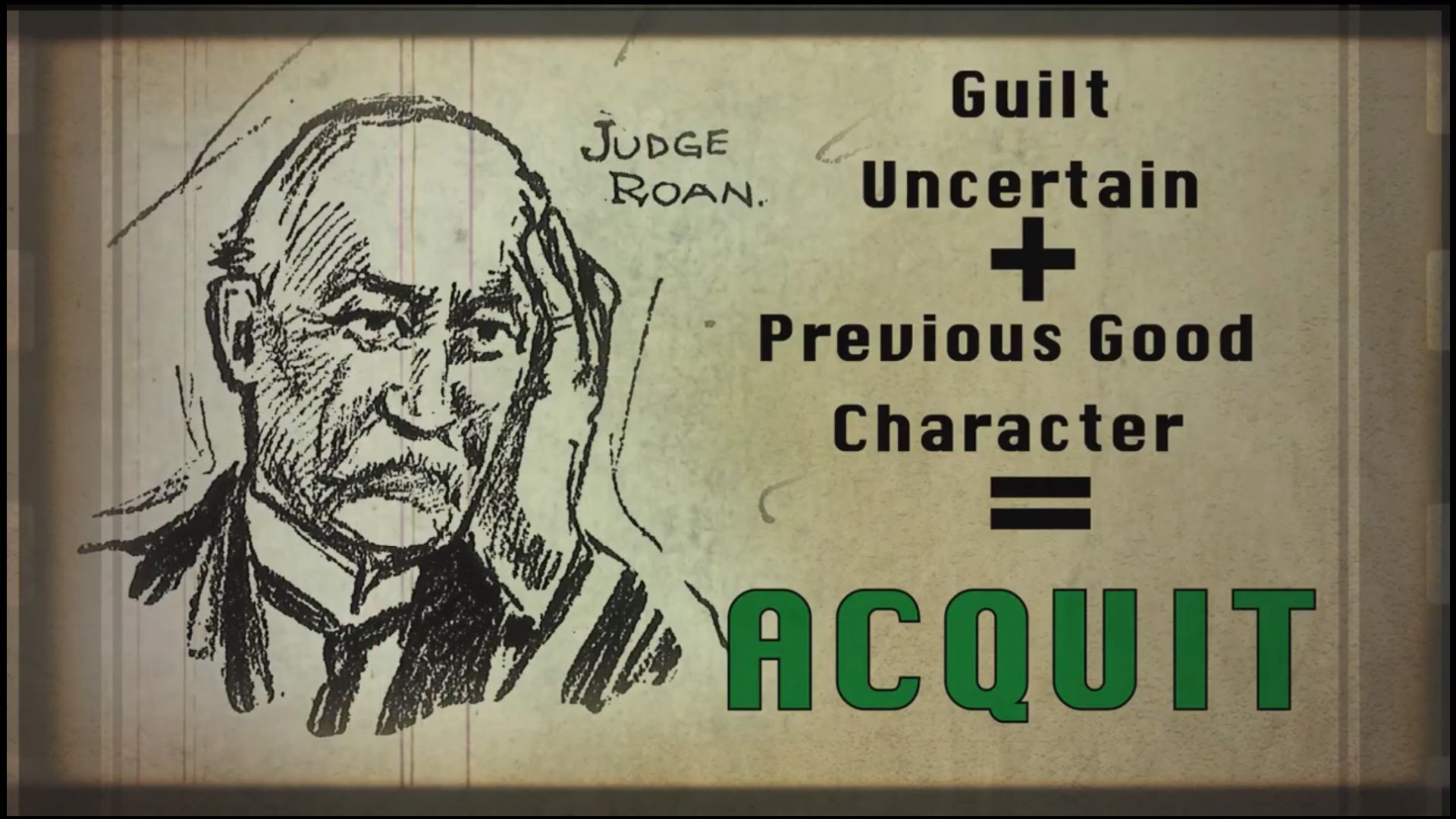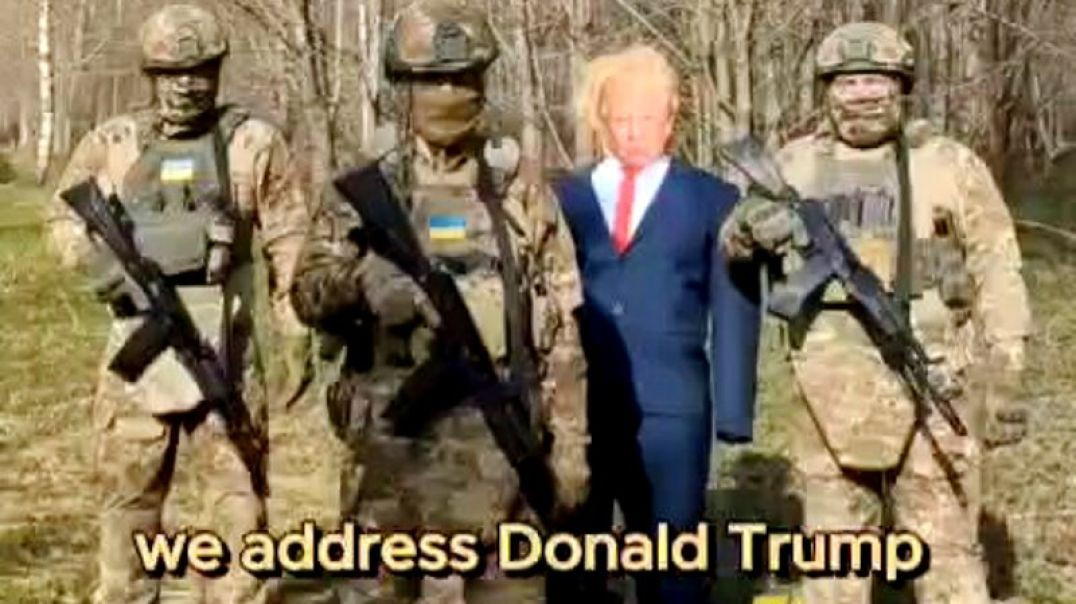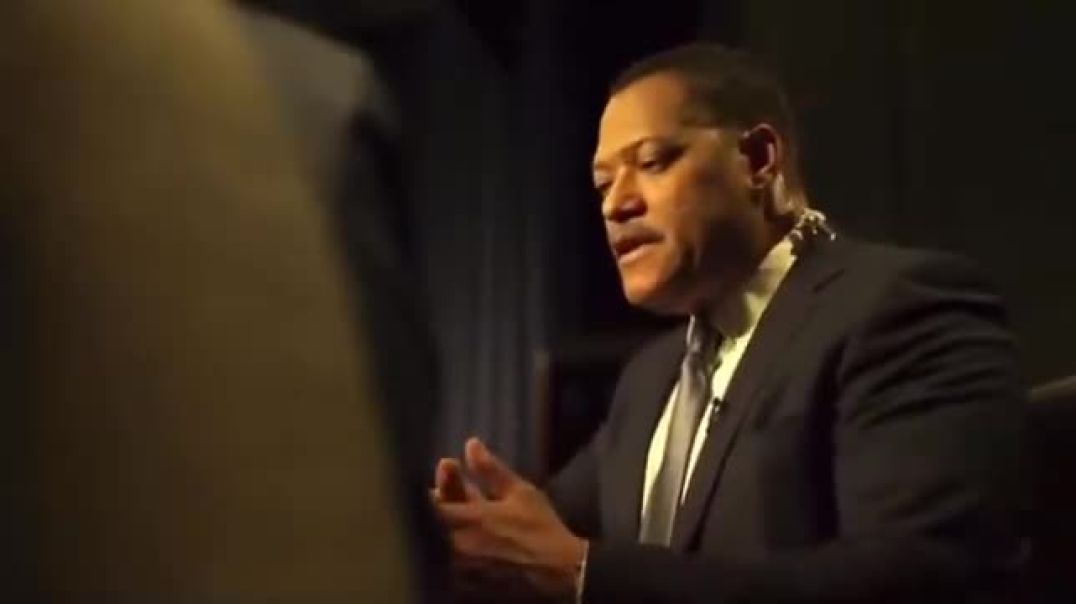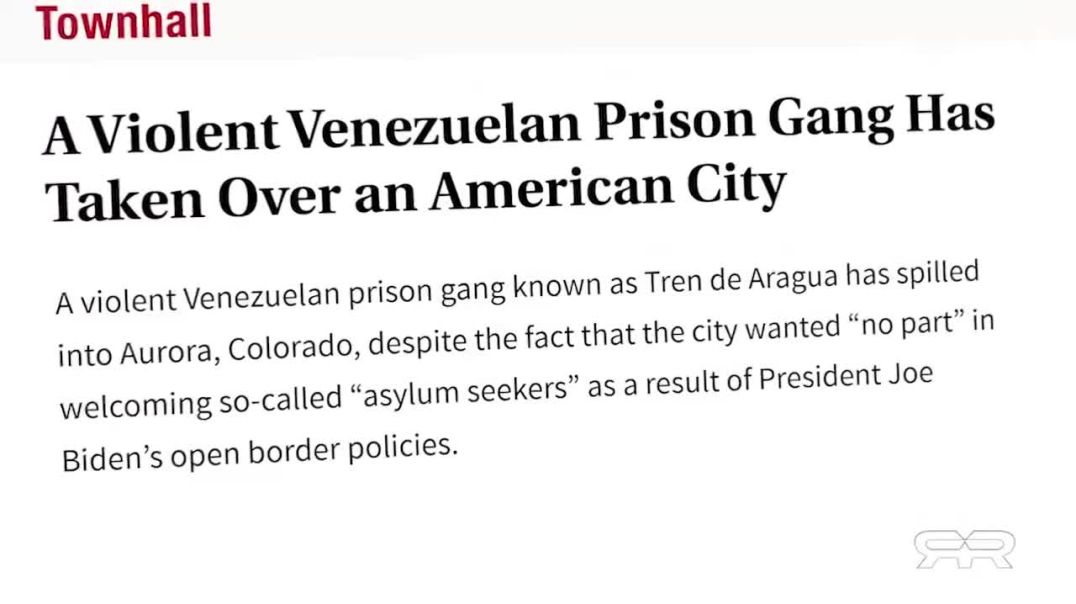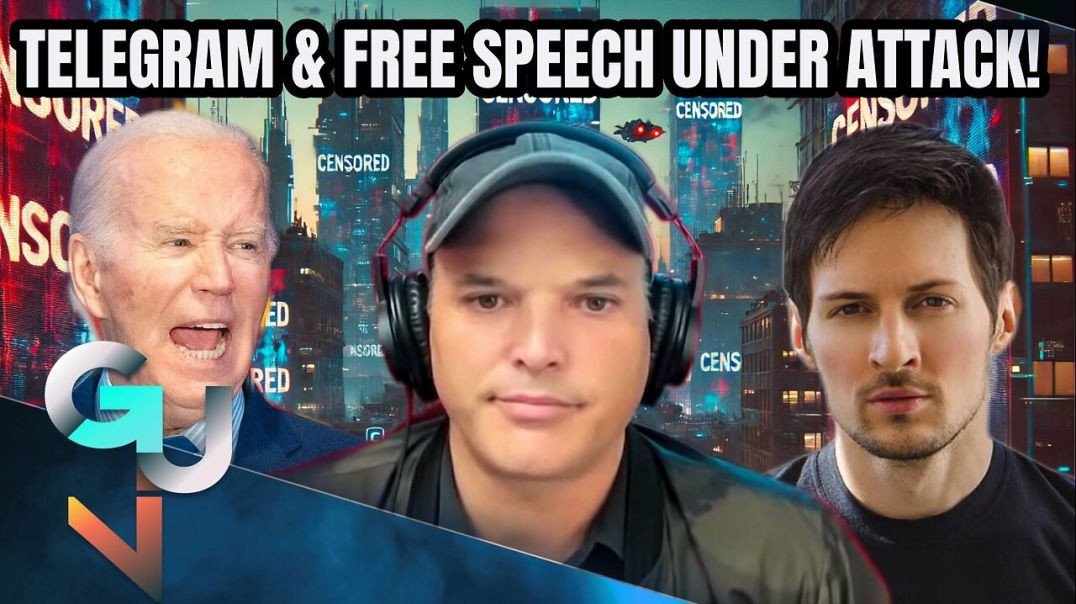Top videos
http://www.21stcenturyacademy.com/ - 21st Century Education
In this interview John Doerr and I discuss how the Vatican was built on a pagan foundation and why it introduced words like "alien" into modern Bibles in preparation people for great deceptions.
Leo Frank was convicted on Monday, August 25, 1913, following the jury instructions provided by Judge Leonard Roan. Leo M. Frank was accused of choking Mary Phagan with a cord that was wrapped around her neck in an unlawful manner and with premeditation to kill and murder her. The jury was sworn to hear the case after the defendant entered a not guilty plea to the charge. The State had to prove its case by providing the jury with proof that proved the defendant's guilt beyond a reasonable doubt because the presumption of innocence was in the defendant's favor. Although beyond a reasonable doubt, the jury was not required to find him guilty.
Murder is defined as the unlawful killing of a human being in the peace of the State by a person of sound mind and discretion with malice of forethought, either express or implied. Express malice is the willful intent to unlawfully take another person's life that is demonstrated by external circumstances that can be used as evidence. When there is little to no indication of provocation and the entire situation surrounding the murder suggests a heartless, malicious intent, malice is presumed. Malice in a legal sense refers to a general evil plan rather than specific animosity toward the deceased. If a homicide is established to have been committed by the defendant, the law presumes that the defendant acted with malice, and the slayer may be found guilty of murder absent compelling evidence to the contrary.
Proof that the defendant committed the murder eliminates the presumption of innocence. It is the defendant's responsibility to defend the homicide after it is established that the defendant committed the murder. The rules of evidence, which are intended to discover the truth, are the most crucial details in this text. Direct evidence that directly refers to the subject at hand is the best type of evidence. Indirect or circumstantial evidence is that which only tends to establish the matter by proving various facts supporting by their consistency the hypothesis claimed to warrant a conviction on the basis of circumstantial evidence.
In addition to excluding all other reasonable doubt hypotheses other than the accused's guilt, the proven facts must be both consistent with and exclude the hypothesis of guilt. In a criminal case, the defendant has presented testimony attesting to his moral character, which the jury should take into account as one of the case's facts. Like any other substantial fact tending to establish the defendant's innocence, good character should be weighed and estimated by the jury. However, the jury must convict if the accused's guilt is established beyond a reasonable doubt and to their satisfaction.
The most crucial information in this passage is that the jury may take into account the defendant's good character if the rest of the testimony raises reasonable doubts about whether or not the defendant is guilty.
If the jury's perception of the defendant's guilt is reasonably raised by the consideration of the evidence and the defendant's good character, then the jury has a duty to grant the defendant the benefit of the doubt created by this and to find the defendant not guilty. When the term "character" is used in this context, it refers to the overall impression that person made on those who knew him before Mary Phagan passed away. When a defendant calls into question his character, the State is free to refute it by demonstrating that his reputation in general is not good or by demonstrating that the witnesses who have claimed that his character is good have misrepresented it.
The defense witnesses for the defense who were introduced to attest to his good character have the right to cross examine, and the Solicitor General has the right to pose any questions in this vein. The jury is not to consider this as evidence that the defendant has been guilty of any such misconduct unless the alleged witnesses testify to it, which is one of the most crucial details in this text. The Solicitor General was permitted to question the defendant's character witnesses about their knowledge of various acts of alleged misconduct on the part of the defendant.
Furthermore, when the defendant has called into question his character, the State is free to call witnesses to refute those who claim his character is strong by showing that it is weak overall. This testimony may be used by the jury, and they have the right to do so along with any other evidence that has been presented regarding the defendant's general character. To be found guilty of the crime for which they are accused, a defendant must, however, be proven guilty beyond a reasonable doubt based on all other evidence in the case. The most crucial information in this text is that the jury can acquit the defendant if they think that the defendant's overall character was strong before Mary Phagan's death. However, if the jury finds the defendant guilty of murder beyond a reasonable doubt, they have the option of convicting him and punishing him with the death penalty by hanging him from a tree until he dies.
The defendant would have to accept the most severe punishment for murder, which is to be hanged by the neck until he dies, if the jury decides not to proceed with the case. The jury has been instructed by Judge Roan that the court must sentence the defendant to life in prison if the jury finds him guilty and recommends that he be held in a penal institution. The defendant's statement, which is not made under oath and is not open to questioning or cross-examination, has been heard by the jury. If the evidence raises a reasonable doubt in the jury's minds, they may acquit the defendant and state in their verdict: "We, the jury, find the defendant not guilty.". Judge Roan concluded his charge to the jury by stating that if the jury found the defendant not guilty, the court would have to sentence him to life in prison.
The jury began deliberation at 01:30 p.m. and at 04:39 p.m., they came to a unanimous decision. After a second and final vote, the verdict was guilty as charged and sentencing recommendation was without mercy, implying a death sentence for Leo Frank. The verdict was delivered to Judge Leonard A. Strickland Roan at 04:56 p.m. and each jury member was polled individually.
JUST IN: The Ukrainian military issues "ISIS style" death threat video against fmr US President @DonaldTrump.
Make this go viral! Not a cent more for Zelensky!
Globalists view Australia as ‘guinea pig’ for new online censorship regime
Protestors all across Australia rallied against the government’s plans to institute a digital-ID for citizens. This comes amid a broader push by the Australian government to censor so-called ‘misinformation’ online, which has seen the country’s regulators threaten X, Telegram, and other free speech platforms.
This showdown is part of a larger battle between globalists and patriots taking place all across the world, according to Simeon Boikov (@AussieCossack).
Original source: https://twitter.com/SputnikInt..../status/178710192031
Donald Trump Says he is Prepared to go to Jail, Says He’s Not Going to Beg the Judge to Keep Him Out
JUST IN: Donald Trump says he is prepared to go to jail, says he’s not going to beg the judge to keep him out.
“I'm okay with [going to jail].”
“I saw one of my lawyers the other day on television saying: ‘Oh no, you don't want to do that to the president.’”
“I said, don't, you don't beg for anything. It’s just the way it is.”
These next 6 months are going to be some of the craziest months in modern political history. Buckle up.
----------------------
Original source: https://x.com/CollinRugg/statu....s/179727655760789133
'I don't think Israel's objective is to defeat the Palestinian resistance. I think Israel's objective is to kill as many Palestinians as possible...it's extermination. It's genocide.'
-Miko Peled on Israel's genocidal war on Gaza
FULL INTERVIEW: https://rumble.com/v4z6nx5-wil....l-the-gaza-genocide-
I think it’s a very obvious conclusion that most of the world has figured out also
If You REALLY Want to Go Down the Rabbit Hole, I am about to Blow Your Mind. Flashback to 2011 Movie
If you REALLY want to go down the rabbit hole, I am about to blow your mind.
Flashback to 2011 movie, “Contagion”.
The blockbuster movie with star-studded Hollywood cast, about a global pandemic stemming from a virus from a wet market in China…
Nathan Wolfe, Metabiota founder and lead virologist, was the lead biological consultant for this movie to help direct the producers on how the health community would realistically respond to a “hypothetical” pandemic.
Nathan Wolfe is also monetarily affiliated with Ghislaine Maxwell and the Clinton Foundation via the TerraMar project, and the Bidens via Rosemont Seneca funding his Biolab company with multiple labs in Ukraine, Metabiota.
Is it’s a coincidence that the same people who warned about a global pandemic coming, also happen to be the ones modifying pathogens?
The same guy who was looking for bat coronaviruses in Ukraine, is also closely affiliated with Epstein, Clinton, Biden, and the Rothschilds.
He also “predicted” the Covid pandemic in his book in 2008, exactly where it would come from, and how the government would respond to it, over a decade before it happened…
Fauci did not “make up” social distancing. It was always the plan.
Nathan Wolfe is the at the epicenter of this entire thing. Fauci is just a front man.
---------------------
Source: https://x.com/WarClandestine/s....tatus/17980774038074
Ex-CDC Director Drops Stunning COVID Admissions
The ship is sinking, and Dr. Redfield is jumping ship before it’s too late.
He says vaccine mandates were a “terrible decision” and based on emotions, not on science.
Why was there a push to get everyone jabbed? Redfield believes there was a “huge influence by the pharmaceutical industry” to get everyone injected.
He also says there was zero rationale for forcing shots on young people.
All these things that were once deemed “conspiracy theories” are now being confirmed by an ex-government official.
Watch and listen to these confessions flow from Dr. Redfield himself.
Source: https://t.me/VigilantFox/11757
The Chinese company Xiaomi announced the launch of a factory where only robots work.
CEO Lei Jun said that the new factory in Beijing can operate 24 hours a day without people and produce 1 smartphone per second (10 million per year).
Some machines will assemble gadgets, others will monitor the quality of their work, and others will maintain cleanliness inside the building.
There are also production lines for automotive electronic parts inside. Xiaomi plans to further scale up robotic production.
Why are Australian Property prices so high and going even higher?
‘To me, he's just a normal grandpa’: Trump’s eldest granddaughter delivers candid speech at RNC
Kai Trump, the eldest grandchild of former President Donald Trump, addressed the audience on the third day of the Republican National Convention in Milwaukee, Wisconsin, revealing a side of her grandfather that "people don't often see."
"To me, he's just a normal grandpa. He gives us candy and soda when our parents aren't looking, he always wants to know how we're doing in school".
"In Germany, doctors are being ordered NOT to treat patients who disagree with the government's policies."
Wait. What? This is insane!
BREAKING: RFK Jr. Revealed that Donald Trump Told him Former CIA Director Mike Pompeo Begged him not
BREAKING: RFK Jr. revealed that Donald Trump told him former CIA Director Mike Pompeo begged him not to release the JFK assassination files while he was in office.
It would only be a catastrophe for Israel if the files were released.
As Americans would discover Israel killed JFK.
And then might figure out Israel was behind Sept 11.
No wonder Israel is so desperate for the truth to be hidden that they call anyone anti semitic if they dare tell the truth.
Israel has been built on lies and deception the house of Israel will fall on their same lies and deception,
What sort of people support such a state of deception?
source: https://x.com/jamiemcintyre21/....status/1828318091044
Shocking Report from Greg Reese on the Venezuelan Migrants Taking Over Colorado
MATT TAIBBI: 'There's been this shift in the way journalists look at free speech. They seem to think these problems won't ever come to their door, when actually journalists historically are going to be the first in line to encounter problems.'
-Matt Taibbi on the arrest of Telegram Founder Pavel Durov and the rise of censorship in the United States
Sources: https://t.me/goingundergroundRT/2128
--------------------
On this episode of Going Underground, we speak to Matt Taibbi, Co-Publisher of ‘Twitter Files’, Co-Host of the ‘America This Week’ Podcast, and Former Contributing Editor of the Rolling Stone magazine. He discusses the arrest of Telegram Founder Pavel Durov and why it marks a paradigm shift in free speech and censorship in Western countries, the creeping digital censorship since the passing of the Digital Services Act in Europe, the precedent set by arresting Durov for the crimes of users using his platform, the significance of Meta boss Mark Zuckerberg’s letter to the House Judiciary Committee Chairman Jim Jordan admitting that the Biden Administration had pressured him to censor COVID-19 content and the Hunter Biden laptop story, his time in Russia and the shift in the journalistic environment there, the creeping move towards censorship in the US following Donald Trump’s victory in 2016 and Brexit, the shift of the priorities of the US government from counter-terrorism to monitoring speech domestically, why he has called Elon Musk ‘disappointing’ on the issue of free speech and his call for a conversation with Elon Musk to resolve their differences stemming from their dispute on Substack, and much more.
-------------------------------
Sources: https://rumble.com/v5cykd1-war....-on-free-speech-matt
BREAKING: The United Kingdom government is planning to grant early release from prison to sex offenders under new government proposals.
Source: https://t.me/GeneralMCNews/10268
One of my favourite videos. Everything they tell you about space must be questioned, especially the moon landing.
“It costs NASA $3B a year to operate the ISS and if they don’t have a darn good explanation as to why they are faking these videos, I and the public would like a darn good explanation as to where our tax money is going.”
Source: https://t.me/zeeemedia/16953
Robert F. Kennedy Jr:
“Bill Gates Uses 'Philanthrocapitalism' to Enrich Himself”
Source: https://t.me/LauraAbolichannel/61554
The shocking revelations of Myron C. Fagin in 1967!
Fagin, a renowned Hollywood writer who unearthed dark secrets within the entertainment industry, claimed that the world's major events have been orchestrated by an elusive and powerful group, which he identified as the Illuminati.
Source: https://t.me/LauraAbolichannel/61687


